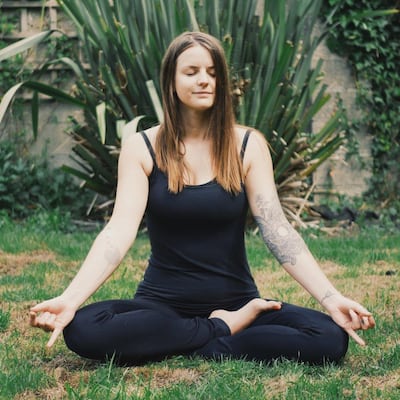I never thought I would end up as a yoga teacher.
I never played sports in school. When I did I came last in everything and never did any physical exercise until I was well into adulthood. I hated it.
However, having worked a highly stressful job and dealing with the general anxieties of modern day life, somewhere along the way, I ended up in a yoga class. I was so bad when I started and found it incredibly difficult – not what I had expected. I left my first class in a state due to my lack of physical fitness and body awareness. Now here I am, teaching others the benefits of an active lifestyle.
How ironic. If I can do it, anyone can.

Something I have come up against over the years is the two main misconceptions of what a yoga class is. Yoga, to many, is a physical activity; to some, it’s a refuge; and, to plenty, it is somewhat of a mystery.
On the one hand, yoga is considered “easy”, a bit of stretching, not a strenuous workout. On the other, it seems there is a fear of the unknown. There seems to be little or no middle ground between the two. In my experience, it’s usually the amateur athletes who have no time for yoga in their fitness regime. However, therein lies the issue: yoga was never meant solely as a fitness regime – but it is constantly misjudged as one.
Highly active people may think that yoga is some basic stretches for the faint hearted. But really it's a physical discipline in strengthening the body so we can sit in meditation easily. The origins of yoga, in Himalayan India, stated that clearly; the reason we practise is to suppress the overactivity in the mind. With a strong, supple body, we can sit comfortably for hours at a time. When undertaken with consistency, yoga can encourage us to be more aware of the habits of our mind, be more focused on our breath cycle and can ease anxiety. It is so much more than a physical activity, something which is misconstrued and marketed as being so in the West. It serves as a workout for both the body and the mind, therefore cannot be compared to a physical practice alone.
Focus on the breath
Yoga is a moving meditation. A huge element of a physical yoga practice is to keep the focus on the breath. We so rarely turn our focus inward nowadays with the invention of technology – we have so many different ways to pacify ourselves and our attention spans have shortened as a result. This rids us of patience as well as making being alone with our own minds very difficult.
I think the school of thought that yoga is not a strenuous physical workout comes from the obsession in our society with body image and unrealistic body ambitions for the average person. We associate this with running, spinning, long hours in the gym. However, don’t be fooled, a yoga class can have you burn just as many calories as any of the aforementioned. As a slower-moving practice, it’s not without its merits. It is one of the only forms of exercise which focuses on conditioning strength, creating flexibility, balancing the nervous system and procuring balance simultaneously. The benefits range from not only improved cardiovascular health, but also better mental health, posture, sleep patterns, overall reduction in tension (especially in the back and neck) and therefore; reduced stress. The latter is the reason I kept going back to class.
Different idea
The majority of people that do try it out come out with a different idea completely after a class and as a teacher, I have never had a first-timer exclaim, "well that was easy!" Being physically fit does not mean you will sail through a class, becoming aware of your body and how its moving in a new way is of course, a learning process.
When we assume a pose in yoga, learning to stay in an uncomfortable or challenging position (balancing on one leg for example) for a period of time teaches us to accept and work through the physical discomfort. We are encouraged to face this discomfort head on and learn to breathe through it.
This, in turn, strengthens the mind and teaches us to accept discomfort when we’re faced with it in everyday life. Learning and observing the patterns of our mind, we get to know ourselves on a much deeper level. To really see ourselves and learn to accept whatever we are faced with. It is an ever-evolving process due to the complex nature of humans, which means that it can never be measured by physical goals. The physical part of the practice is only the doorway to where all the real work is done: within.
As I was taught in India, it is not a work-out, but a work-in.
So if you like some therapy with your exercise, why not step on to the mat?









